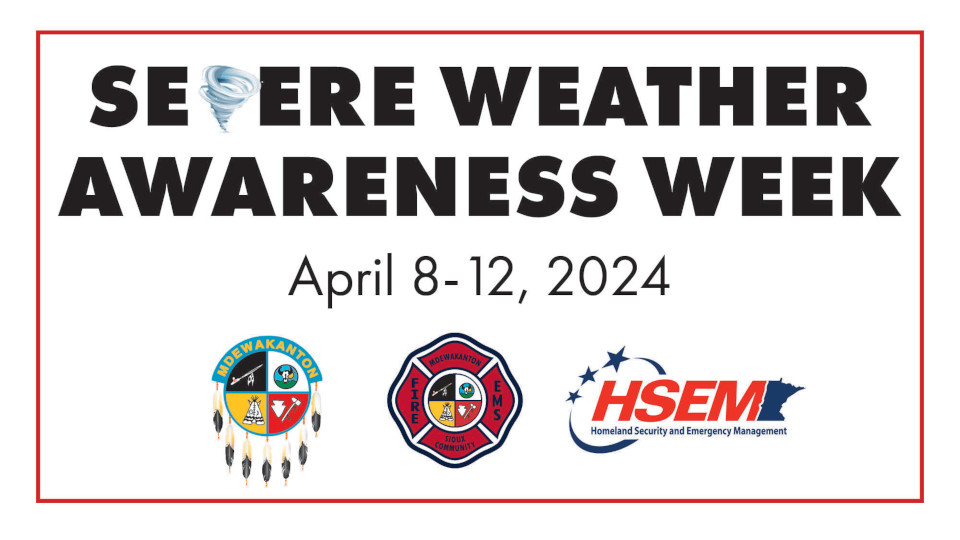Severe Weather Awareness Week: Day 5 Focus On Flood Safety

Table of Contents
Understanding Flood Risks
Understanding your risk of flooding is the first step to effective flood safety. This involves identifying flood-prone areas and recognizing the warning signs of an impending flood.
Identifying Flood-Prone Areas
Determining if you live in a flood-prone area is crucial for proactive flood safety. Several resources and observations can help you assess your risk:
- Use online flood maps: The Federal Emergency Management Agency (FEMA) provides detailed flood maps for the United States. These maps show areas with varying levels of flood risk, helping you understand your vulnerability. Utilize these resources to pinpoint your property's flood risk.
- Check historical flood data: Research your area's history. Local government websites, historical societies, and news archives often contain information about past flooding events. Understanding the frequency and severity of past floods provides valuable insight into future risks.
- Consider your location: Proximity to rivers, streams, creeks, and low-lying areas significantly increases your flood risk. The closer you are to these water sources, the greater the chance of experiencing flooding.
- Observe your neighborhood: Pay attention to your surroundings. Has your neighborhood experienced flooding in the past? Note any areas that tend to accumulate water during heavy rainfall. This local knowledge is invaluable for gauging your individual risk.
Recognizing Flood Warning Signs
Recognizing the warning signs of an approaching flood is critical for timely evacuation and safety. Be vigilant and aware of the following indicators:
- Heavy rainfall: Prolonged or intense rainfall, especially over a short period, significantly increases the risk of flash floods.
- Rapidly rising water levels: Observe rivers, streams, and creeks closely. A rapid increase in water level is a strong indicator of potential flooding.
- Official warnings: Pay close attention to flood warnings and watches issued by local authorities, the National Weather Service (NWS), and emergency broadcasters. These alerts provide critical information and instructions.
- Unusual water characteristics: Changes in water color, increased turbidity, or the presence of unusual debris in waterways can signal an approaching flood.
Creating a Flood Safety Plan
Proactive planning is essential for effective flood safety. This involves developing an evacuation plan, building an emergency kit, and protecting your property.
Developing an Evacuation Plan
A well-defined evacuation plan is crucial for ensuring your family's safety during a flood. Your plan should include:
- Escape routes: Identify multiple escape routes from your home, considering various scenarios and potential road closures.
- Meeting place: Designate a safe meeting place outside your home where family members can reunite after evacuating.
- Shelter locations: Know the locations of nearby evacuation shelters or temporary housing options.
- Practice regularly: Conduct regular drills to familiarize yourself and your family with the evacuation plan. This ensures everyone knows what to do in an emergency.
Building an Emergency Kit
Having a readily accessible emergency kit is vital for flood safety. Your kit should include:
- Water: Store at least one gallon of water per person per day for several days.
- Food: Include non-perishable food items that require minimal preparation.
- First-aid kit: Ensure your kit contains essential medical supplies and medications.
- Flashlights and batteries: Provide reliable lighting sources during power outages.
- Radio: A battery-powered radio will keep you informed about weather updates and emergency instructions.
- Important documents: Store copies of important documents, such as insurance policies and identification, in waterproof containers.
- Additional items: Consider including blankets, extra clothing, and personal hygiene items.
Protecting Your Property
Taking steps to protect your property can minimize flood damage. These preventative measures include:
- Elevate valuables: Move valuable items and appliances to higher levels within your home.
- Flood insurance: Consider purchasing flood insurance to protect your financial investment.
- Waterproof barriers: Install waterproof barriers around your home's foundation to help prevent water from entering.
- Regular maintenance: Clean gutters and downspouts regularly to ensure proper water drainage and prevent water buildup around your home.
Actions to Take During a Flood
During a flood event, your actions are critical. Prioritize evacuation when necessary and stay safe if evacuation isn't possible.
Evacuate Immediately
When floodwaters threaten, evacuation is often the safest course of action.
- Obey orders: Follow evacuation orders from local officials without delay.
- Avoid driving: Never drive through flooded areas, even if the water appears shallow. Remember the saying: "Turn around, don't drown."
- Avoid walking or swimming: Floodwaters can contain hazardous materials and strong currents. Avoid contact with floodwaters at all costs.
Staying Safe During a Flood (if evacuation is not possible)
If evacuation isn't feasible, take the following precautions:
- Higher ground: Move to the highest level of your home.
- Turn off utilities: If safe to do so, turn off gas and electricity to prevent further hazards.
- Monitor conditions: Stay updated on weather reports and flood warnings.
- Stay informed: Stay informed about the flood's progression and any changes in the situation.
Post-Flood Safety and Recovery
Returning home after a flood requires caution and careful planning. Prioritize safety and seek assistance when needed.
Returning Home Safely
Before entering your flood-damaged home, take the following precautions:
- Structural damage: Check for structural damage to your home before entering.
- Hazards: Be aware of downed power lines and other potential hazards.
- Standing water: Never enter a building with standing water inside.
- Cautious cleanup: Use caution when cleaning up flood-damaged areas, being mindful of potential health hazards.
Seeking Assistance
After a flood, various resources are available to aid in recovery:
- Insurance company: Contact your insurance company to report damages and initiate the claims process.
- Local authorities: Reach out to local authorities for assistance with cleanup efforts and other needs.
- FEMA: Utilize resources provided by the Federal Emergency Management Agency (FEMA) for disaster relief and assistance.
This Severe Weather Awareness Week, prioritizing flood safety is crucial. By understanding flood risks, creating a comprehensive flood safety plan, and taking appropriate actions during and after a flood, you significantly reduce risks to life and property. Remember, preparation is key to mitigating the impact of floods. Take action today to improve your family's flood safety. Learn more about flood safety and preparedness in your area, and make a plan for your home and family.

Featured Posts
-
 Kuluep Krizi Doert Oenemli Oyuncu Sorusturma Altinda
May 25, 2025
Kuluep Krizi Doert Oenemli Oyuncu Sorusturma Altinda
May 25, 2025 -
 Is De Recente Prestatieverschillen Tussen Europese En Amerikaanse Aandelen Houdbaar
May 25, 2025
Is De Recente Prestatieverschillen Tussen Europese En Amerikaanse Aandelen Houdbaar
May 25, 2025 -
 El Baile De La Rosa 2025 Carolina De Monaco Alexandra De Hannover Y Los Vestidos Que Brillaron
May 25, 2025
El Baile De La Rosa 2025 Carolina De Monaco Alexandra De Hannover Y Los Vestidos Que Brillaron
May 25, 2025 -
 Gauffs Grit Reaching The Italian Open Third Round
May 25, 2025
Gauffs Grit Reaching The Italian Open Third Round
May 25, 2025 -
 Dr Terrors House Of Horrors A Thrilling Guide
May 25, 2025
Dr Terrors House Of Horrors A Thrilling Guide
May 25, 2025
